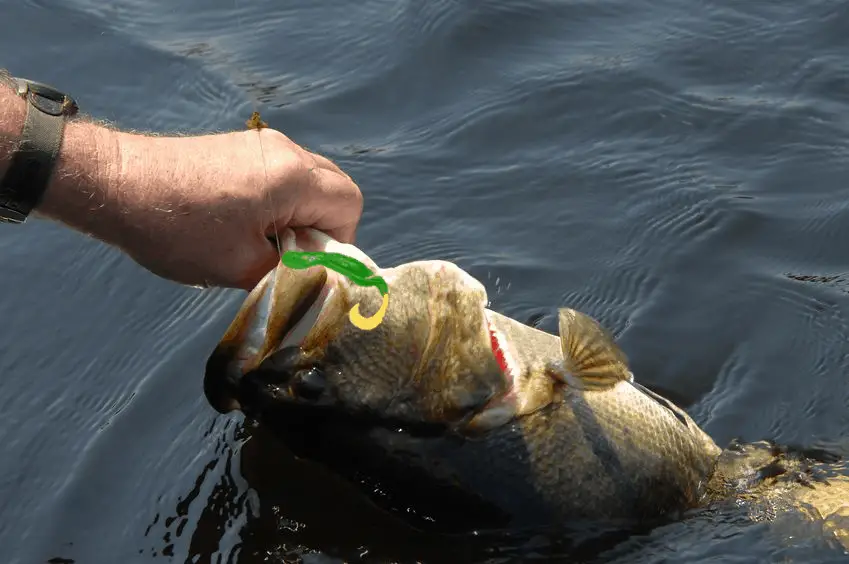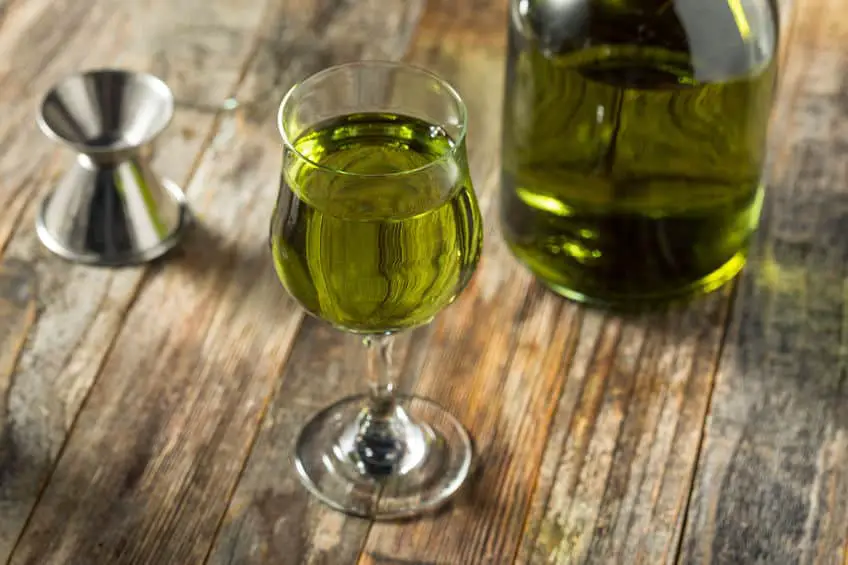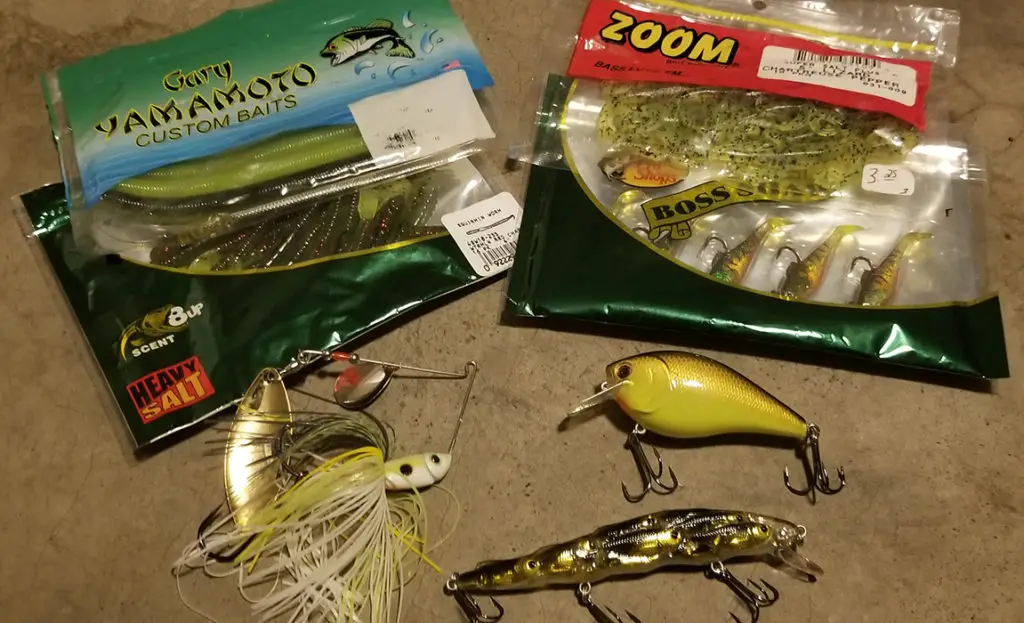
I think it’s safe to say that the vast majority of us anglers have never heard the word ‘chartreuse’ used outside of fishing. I don’t think anyone who is new to fishing looks at a bright neon green spinner and says “Now that looks like it catches fish!” Not only is the word fun to say, but the color is extremely effective at catching bass.
It is unknown why bass seem to strike chartreuse-colored baits more than others. Many experts and professionals speculate their attraction is related to the hues that are found on baitfish. A recent study concluded that large-mouth bass see chartreuse and white as the same color.
Let’s break the study down and look into why chartreuse is still a solid choice of color for bait despite the study’s findings and when to use it.
What is chartreuse? A crazy origin

Simply put, chartreuse is a yellow-ish green color almost like Mountain Dew. The word ‘chartreuse’ originated in France in 1737 at a monastery where some monks were brewing a 110-proof liquor that contained over 130 herbs and plants. The concoction was named after its distinct and vibrant yellow-green color. No joke.
The color made it’s way into the United States in the 1930’s. The Day-Glo Corporation, located in Cleveland Ohio, manufactured chartreuse-colored high visibility paint. Eventually the color made it’s way on safety equipment like vests. Somewhere around the 80’s and 90’s the color found it’s way into fashion and defined an era.
Somewhere in that timeline, chartreuse began appearing on fishing lures too. And those lures began catching fish.
Wait, bass can’t see chartreuse? Breaking down the study
I want to start by pointing out that this study was conducted on both Northern Strain and Florida Strain of large-mouth bass. The bass were kept in separate tanks with perfectly clear water, which could affect the accuracy of the study considering that most ponds, lakes, and rivers have a greenish tint to them. It is also unclear is the eyesight of bass can change over time.
Seeing red: color vision in largemouth bass was a study conducted by a group of scientists from New York and Illinois with the goal being to find out what colors bass can actually see.
The bass were split up randomly into separate tanks each with six different colored feeding tubes. The bass were required to strike at the appropriate color assigned to their tank to receive food for 69 days. If the bass did not strike at the correct tube after a certain period of time, food was released from that tube anyway. The colors of the pipes were red, green, blue, chartreuse, black, and white.
The study states that it took about 47 days to train the bass accurately.
The results of the study

The bass were found to see shades of green and red extremely well. This explains why fire-craw and green-pumpkin baits do so well, but what about chartreuse?
After the bass were trained to feed on a chartreuse, a few were randomly selected to be tested. The scientists used all 6 different colors of lures to see if the bass would be able to properly distinguish the color that they were trained to feed from.
After the testing was complete, the data showed that the bass were successful at distinguishing all colors but had trouble distinguishing between white and chartreuse.
The bass trained to strike the chartreuse lure only did so 46% of the time and struck white instead 25% of the time. Interestingly, when the bass were trained to strike white they did so correctly 33% of the time and struck the chartreuse lure 29% of the time and black 22% of the time.
With this data, the scientists were able to conclude that the bass cannot really distinguish between white and chartreuse reliably.
Why you should use chartreuse colored bait for bass
I don’t think the results of the study are convincing enough to ditch the chartreuse magic and I’m going to tell you why.
Chartreuse primarily represents a hue that the fins on baitfish, like bluegill, have when they come into contact with light. The study uses clear water conditions which are pretty uncommon when fishing. The color of every bait changes the deeper it goes because there is less light passing through it or reflecting off of it.
This means that a chartreuse lure can appear different shades of green or yellow depending on how deep in the water the bait is. How translucent the bait is can also affect how light reflects off and pass through it. Flakes in soft plastic bait also reflect light better than the plastic and can change how the bait is presented.
It should also be noted that the study ONLY covered largemouth bass. We have no idea if the same conclusions can be made for smallmouth, chances are probably not. A different study performed at the Virginia Institute of Marine Science concluded that striped bass are actually most sensitive to white and chartreuse.
What do professional bass anglers think about chartreuse?
The pros love chartreuse and black and blue and you hear it all the time. The study concluded that those two colors should be equally or less effective as white and green, respectively. So who do you listen to when science says one thing but the experts say something else?
I don’t know about you, but I’m going with the guys that have had plenty of time on the water and have enough experience to know rather or not chartreuse is effective.
Some pros believe that chartreuse gets strikes just because it stands out. The oldest form of fishing bait was designed to imitate natural food for the fish and I’ve never seen a solid chartreuse baitfish.
Others say that the sun may reflect off the vegetation in the water and cast a yellow-ish glow onto the baitfish hiding in and around them.
Here is a video of two guys tearing up the bass with a chartreuse spinnerbait.
The best time to use chartreuse baits for bass
- Chartreuse can catch fish under condition in my personal experience.
- When the sun is shining and the water is clear, green and chartreuse are a great combo
- Solid chartreuse baits are best used in muddier conditions
- The best color of bait matters more on the condition of the water you’re fishing than the time of year or weather
- Small-mouth bass seem to like chartreuse-colored baits a lot more than their largemouth cousins
- Some anglers prefer to use a chartreuse marker to color parts of their soft plastics to draw more attention to them
The best chartreuse baits to use for bass

Every angler has their go-to bait and they all come in a wide array of colors and patterns. There are a few soft plastic baits that you should have in chartreuse in your tackle bag.
Gary Yamamoto Senko
What’s there to say? Yamamoto’ Senko bait (Bass Pro Shops) is easily the most popular soft plastic of all time, they just catch fish. The bait comes in over 40 colors and can be fished just about any way, which makes it extremely versatile and a must-have in chartreuse.
Zoom Fluke
Another classic plastic, the fluke (Bass Pro Shops) comes in a color called “baby bass” which is pretty much just chartreuse. The fluke is meant to imitate a baitfish and it does so very well.
Z-Man Finesse TRD
The Z-Man Finesse baits (Bass Pro Shops) took the fishing world by storm. The Finesse worm comes in “Coppertruese”, which is chartreuse on the bottom, dark green on top, and has copper-colored flakes.
Booyah Spinnerbait
Any respectable angler has a chartreuse spinnerbait (Bass Pro Shops) in their tackle bag. The spinnerbait works so well because it produces a ton of vibration.

